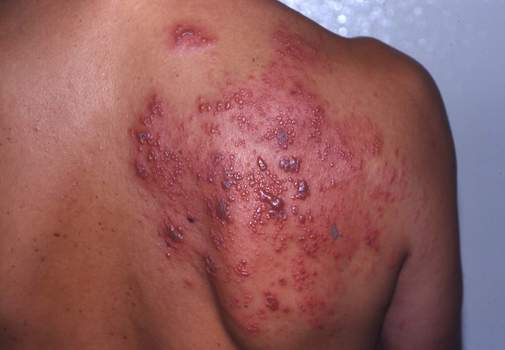What's in this article?
What is HIV Rash
HIV rash is a common symptom of HIV infection. Around 85% of HIV positive individuals will experience a rash at some point in their infection, due to either:
- Acute HIV infection
- A weakened immune system caused by chronic infection
- A bad reaction to anti-HIV medication
HIV Overview
♦ A rash is an irritated area of the skin that is sometimes itchy, red, and painful.
♦ Possible causes for rash in people with HIV include HIV infection itself, other infections, and HIV medicines.
♦ Rash is among the most common side effects of HIV medicines. Rash due to HIV medicines is often not serious and goes away in several days to weeks without treatment. Sometimes it may be necessary to switch to another HIV medicine. In rare cases, a rash caused by an HIV medicine can be a sign of a serious, life-threatening condition.
♦ If you have HIV, tell your health care provider if you have a rash. A rash that may not seem serious can be a sign of a life-threatening condition that requires immediate medical attention.
Herpes and the HIV Rash

Individuals with both HIV and herpes will experience very severe HIV rashes, making related symptoms and outbreaks much worse.
Rashes may appear red and filled with fluid. They may periodically burst and crust over.
HIV infection

A rash may be the first sign that a person is infected with HIV. This earliest stage of HIV infection is called acute HIV infection. A rash may also be a symptom of HIV infection at any stage of the disease.
Other HIV infections
Rash may be a symptom of other infections. HIV destroys the infection-fighting cells of the immune system. Damage to the immune system puts people with HIV at risk for infections, and rash is a symptom of many infections.
HIV medicines
Rash is among the most common side effects of HIV medicines. HIV medicines in all HIV drug classes can cause a rash. (HIV medicines are grouped into drug classes according to how they fight HIV.)

Rash due to HIV medicines is often not serious and goes away in several days to weeks without treatment. Sometimes it may be necessary to switch to another HIV medicine. If you are taking HIV medicines, tell your health care provider if you have a rash. In rare cases, a rash caused by an HIV medicine can be a sign of a serious, life-threatening condition.
What To Do if You Notice A HIV Rash
If you do notice this kind of rash and it’s associated with any other acute symptoms of HIV, you should get HIV tested immediately.
Over-the-counter medications like Benadrul or Hydrocortisone Cream can be used to heal rash and lessen itching.
Try to avoid hot baths, showers and direct sunlight if possible.
Acute HIV Rash: A Symptom of HIV Infection
When people are first infected with HIV, they may experience an acute, ‘flu-like’ illness called a ‘seroconversion illness,’ about 2-4 weeks after being infected. The HIV rash is a symptom of this condition.

The rash will mostly affect the upper part of the body and will probably be found on the shoulder, chest area (as in the picture below), face, torso and palms of the hands.
Typically the rash will be flat or barely raised with small reddish dots/ spots (resembling eczema) in people with light skin, and dark purple/ black in people with dark skin.
The rash is not usually itchy and it tends to disappear within 3 weeks.
HIV Rash During On-Going Infection
During ongoing HIV infection, as your immune system becomes damaged, you may experience red and itchy (pruritic) skin.
You may experience a number of skin conditions including:
♦ Psoriasis: Scaly lesions on elbows, hands and feet. Pre-existing psoriasis can also be exacerbated by new HIV infections.
♦ Seborrhoeic dermatitis: Occurs on the scalp, ears, eyebrows, chest axillae, groin and feet.
♦ Eosinophilic pustular folliculitis: Acne or pimples may appear around hair follicles on the upper arms and chest.

In addition to this, you may notice blisters in the ‘moist‘ areas of the body such as the mouth, genitals and eyes.
read more related articles:





